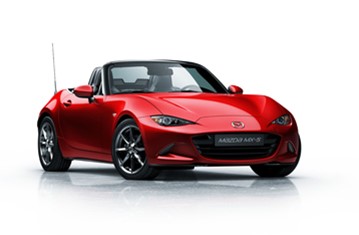Find more information in the General Comments section of the assessment
Find more information in the Rating Validity tab of the assessment
- See More
- See More
- See More
- See More
- Good
- Adequate
- Marginal
- Weak
- Poor
 Passenger
Passenger
 Driver
Driver
 Rear Passenger
Rear Passenger
 Driver
Driver
 Car
Car
 Pole
Pole
 Rear Seat
Rear Seat
 Front Seat
Front Seat
- Good
- Adequate
- Marginal
- Weak
- Poor
Passenger
Fitted to the vehicle as standard
Not fitted to the test vehicle but available as option
Not Available
-
Infants up to 13 kg
-
Infants and toddlers up to 18 kg
-
Toddlers from 9 to 18 kg
-
Toddlers over 18 kg
Easy
Difficult
Safety critical
Not allowed
| Seat Position | |
|---|---|
| Front | |
| Passenger | |
| Maxi Cosi Cabriofix (Belt) | |
| Britax Römer King Plus (Belt) | |
| Britax Römer Duo Plus (ISOFIX) | |
| Britax Römer KidFix (Belt) | |
| Maxi Cosi Cabriofix & EasyFix (Belt) | |
| Maxi Cosi Cabriofix & EasyFix (ISOFIX) | |
| BeSafe iZi Kid X3 ISOfix (ISOFIX) | |
| Maxi Cosi Pearl & Familyfix (ISOFIX) | |
| Britax Römer KidFix (ISOFIX) |
Easy
Difficult
Safety critical
Not allowed
As the MX-5 is a two-seater, the assessment of child protection is based on the features available in the vehicle for safe transportation of children in the front passenger seat, and on the installation of various types of restraints in that seating position. The front passenger airbag can be disabled to allow a rearward facing child restraint to be used in that seating position. Clear information is provided to the driver regarding the status of the airbag and the systenm was rewarded. All of the restraint types for which the MX-5 is designed could be properly installed and accommodated.
- Good
- Adequate
- Marginal
- Weak
- Poor

Head Impact 21.7 Pts
Pelvis Impact 6.0 Pts
Leg Impact 6.0 Pts
The MX-5 has an 'active' bonnet. Sensors in the bumper detect when a pedestrian has been struck and actuators lift the bonnet, creating more space between the surface and the hard structures in the engine compartment. Mazda showed that the bonnet would deploy robustly over a range of speeds and for a variety of pedestrian statures. Accordingly, the bonnet was tested in the deployed (raised) position. Results were almost entirely good over the entire bonnet surface. The bumper scored maximum points for the protection it offered to pedestrians' legs and protection of the pelvis region was also good at all locations.
- Good
- Adequate
- Marginal
- Weak
- Poor
| System Name | Adjustable Speed Limiter |
| Speed Limit Information Function | N/A |
| Warning Function | Manually set |
| Speed Limitation Function | Manually set |
| System Name | DSC | |
| Performance | ||
| Vehicle Yaw Rate @ COS + 1.00 s | 1.5% | meets ECE requirements |
| Vehicle Yaw Rate @ COS + 1.75 s | 1.3% | meets ECE requirements |
| Lateral Displacement @ BOS + 1.07 s | 3.2 m | meets ECE requirements |
| Applies To | All seats | ||
| Warning | Driver Seat | Front Passenger(s) | Rear Passenger(s) |
| Visual | |||
| Audible | |||
|
|||
| System Name | LDWS |
| Type | Lane Departure Warning |
| Operational From | 70 km/h |
| Warning | Audible & Visual |
| Performance | |
|
LDW Confirmation Test
|
Pass |
Electronic stability control is standard equipment on the MX-5, together with a seatbelt reminder for driver and passenger seats. A driver-set speed limiter is an option which is expected to be widely fitted, as is a lane departure warning system. There is no autonomous braking system on the MX-5.
- Specifications
- Safety Equipment
- Videos
- Rating Validity
Specifications
Tested Model Mazda MX-5 1.5 SE-L, RHD
Body Type - 2 door roadster
Year Of Publication 2015
Kerb Weight 1030kg
VIN From Which Rating Applies - all MX-5s
Class Roadster sports
Safety Equipment
Note: Other equipment may be available on the vehicle but was not considered in the test year.
Fitted to the vehicle as standard
Fitted to the vehicle as option
Not fitted to the test vehicle but available as option
Not Available
Not Applicable
Videos
Rating Validity








Find more information in the General Comments section of the assessment
 Share
Share













The passenger compartment of the MX-5 remained stable in the frontal offset test. Dummy readings indicated good protection of the knees and femurs of both the driver and passenger. Mazda showed that a similar level of protection would be provided to occupants of different sizes and to those sat in different positions. The driver's airbag did not have sufficient pressure to prevent the head from making contact with the steering wheel, through the airbag material. Although dummy readings were good, close examination of the traces and analysis of the high speed film showed the contact and protection was rated as adequate. Protection of the passenger was good for all body areas. In the full width rigid barrier test, protection of the driver was good for all parts of the body and that of the passenger was good apart from chest, protection of which was adequate. In the side barrier impact, protection of the chest was adequate and that of all other body areas was good. In the more severe side pole test, chest protection was rated as marginal, with good protection of other critical body areas. The seats and head restraints provided good protection against whiplash injuries in the event of a rear-end collision. The MX-5 does not have an autonomous emergency braking system.